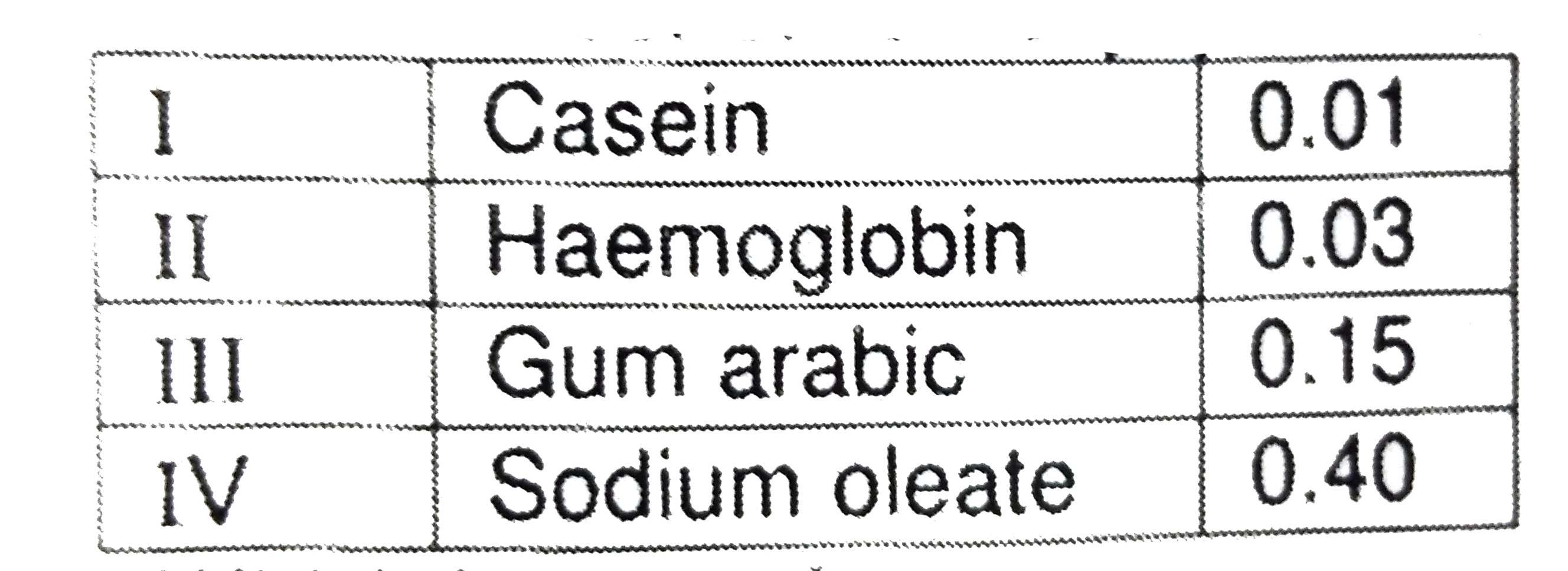Protective sols are:
lyophilic
lyophobic
both (a) and (b)
none of these
The correct Answer is:a
To solve the question "Protective sols are:", we need to understand the concepts of lyophilic and lyophobic sols. Here’s a step-by-step solution:
Step 1: Define Protective Sols
Protective sols are colloidal systems that help stabilize other colloids, particularly lyophobic sols, against coagulation or precipitation.
Step 2: Understand Lyophilic and Lyophobic Sols
- Lyophilic Sols: These are colloids that have a strong affinity for the solvent (usually water). They are stable and can be easily dispersed in the solvent. Examples include gelatin and starch.
- Lyophobic Sols: These colloids have little to no affinity for the solvent. They are less stable and can easily coagulate. Examples include metal sols like gold or silver.
Step 3: Analyze the Stability of Protective Sols
Protective sols are typically lyophilic because they can stabilize lyophobic sols. The lyophilic nature allows them to interact with the solvent and prevent the aggregation of the lyophobic particles.
Step 4: Conclusion
Since protective sols are primarily lyophilic, the correct answer to the question is that protective sols are lyophilic.
Final Answer
Protective sols are lyophilic.
---
Protective sols are colloidal systems that help stabilize other colloids, particularly lyophobic sols, against coagulation or precipitation.
- Lyophilic Sols: These are colloids that have a strong affinity for the solvent (usually water). They are stable and can be easily dispersed in the solvent. Examples include gelatin and starch.
- Lyophobic Sols: These colloids have little to no affinity for the solvent. They are less stable and can easily coagulate. Examples include metal sols like gold or silver.
Protective sols are typically lyophilic because they can stabilize lyophobic sols. The lyophilic nature allows them to interact with the solvent and prevent the aggregation of the lyophobic particles.
Since protective sols are primarily lyophilic, the correct answer to the question is that protective sols are lyophilic.
Protective sols are lyophilic.
Similar Questions
Positive sol is :
View Solutionwhich one of the sols acts as protective colloid ?
View SolutionGold number of some lyophilic sols are :

Which has maximum protective power :View SolutionOne gram of a protective colloid 'X' is to be added to 200ml of gold sol to prevent coagulation of it when 1 ml of 10% NaCl is added. Calculate the gold number of protective colloid 'X'.
View SolutionWhen 6×10−5g of a protective colloid was added to 20mL of a standard gold sol, the precipitation of latter was just prevented on addition of 2mL of 10%NaCl solution. The gold number of a protective colloid is
View SolutionWhen 6×10−5g of a protective colloid was added to 20mL of a standard gold sol, the precipitation of latter was just prevented on addition of 2mL of 10%NaCl solution. The gold number of a protective colloid is
View SolutionMultimolecular sols are:
View SolutionGold of some lyophilic sols are :
I:Casein:0.01II:Haemoglobin:0.03III:Gum arabic:0.15IV:Sodium oleate:0.40
Which has maximum protective power:View SolutionThe protective ozone layer of stratosphere itself requires protection from indiscriminate use of :
View SolutionLyophobic sols are:
View Solution

